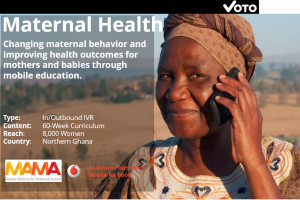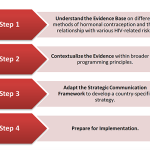ICTs for SBCC Programming: Recap of Panel Discussion from International SBCC Summit 2016
At the first International Social and Behavior Change Communication (SBCC) Summit in Addis Ababa, Ethiopia, attendees filled a standing room only venue to listen to five panelists speak about their experiences with utilizing Information and Communication Technologies (ICTs) for SBCC programming.
 The speakers highlighted the importance of choosing the right technology, understanding the life cycle of technological devices as well as the basics of integrating and evaluating ICTs within SBCC projects.
The speakers highlighted the importance of choosing the right technology, understanding the life cycle of technological devices as well as the basics of integrating and evaluating ICTs within SBCC projects.
Although several different projects and various aspects of SBCC programming were discussed, there was one takeaway that stood out: the strong need for organizations to conduct a thorough needs assessment to understand what sort of device will work best for their target population.
Rebecca Weissburg, Vice President of Strategic Partnerships at VOTOMobile (VOTO), spoke about VOTO’s various programs on maternal and child health in Africa. particularly in connecting hard-to-reach populations. Weissberg made the point that sometimes the most obvious technology solutions are not the most efficacious. An example is the use of interactive voice response (IVR) technology over SMS messages in low literacy settings. Even though SMS is available widely throughout the world, it might not be the best solution to reach certain populations. On-the-ground research allows program managers to understand what features of mobile technology will have the most impact.
Hilmi Quraishi, Co-Founder of ZMQ and Ashoka Fellow, discussed several initiatives led by his social enterprise on the ground in India, Uganda and Afghanistan. ZMQ focuses on innovative programs such as games that can be played on simple flip phones to teach adolescents and young adults about the dangers of risky sexual health behaviors. Quraishi spoke on how gaming may be the future of the intersection of technology and SBCC. The best way to ensure health messaging is truly heard would be to educate in an exciting way by appealing to audience interests, he said.
Pippa Yeats, Service Design Lead at Praekelt Foundation, discussed initiatives to empower women and impact maternal and reproductive health. Yeats provided an overview on MOM Connect, a program driven by the Ministry of Health in South Africa to register every pregnant woman in the country. After registration, participants are sent SMS messages about various service offerings. One of the most intriguing aspects of the program is the helpdesk interface. Pregnant women or others in the household have sent nearly 200,000 messages to the helpdesk; these messages are answered in the same day by a staff of 10 people or less. Yeats noted that access to this knowledge and information has had a secondary, unpredictable impact: women have stated that they feel more empowered and independent, which can also lead to better health outcomes for themselves and their children.
Dinar Pandan Sari, Program Officer at Johns Hopkins Center for Communication Programs in Indonesia, spoke about generating demand for family planning tools and resources among married women. She explained that Indonesia has the largest population of married women of reproductive age in the world and there are many misconceptions about contraception devices, particularly about implant and IUDs. Using social media such as Facebook, Twitter and even Instagram to talk about family planning can help reduce any stigma associated with using contraception.
The final panelist, Carol Bothwell, Director of Technology Innovation for Development at Catholic Relief Services, wrapped up by making important connections between the panelists. She pointed out the importance of doing needs assessments to determine whether SMS or IVR is best for the target population of a program. Bothwell also emphasized that although technology can be a great tool, it is important to have a plan and strategically utilize technological devices within that plan to reap the most benefits. Organizations looking for guidance on planning how to best use technology to meet their needs can refer to resources like the SDG ICT Playbook. Released last fall, the playbook takes a look at the UN General Assembly’s Sustainable Development Goals and discusses which technological application would be the most effective for each goal.
Technology will continue to be an important part of SBCC programming moving forward; however, making sure that we integrate technology thoughtfully and only after thorough research will be the difference between success and failure.








Leave a Reply
Want to join the discussion?Feel free to contribute!